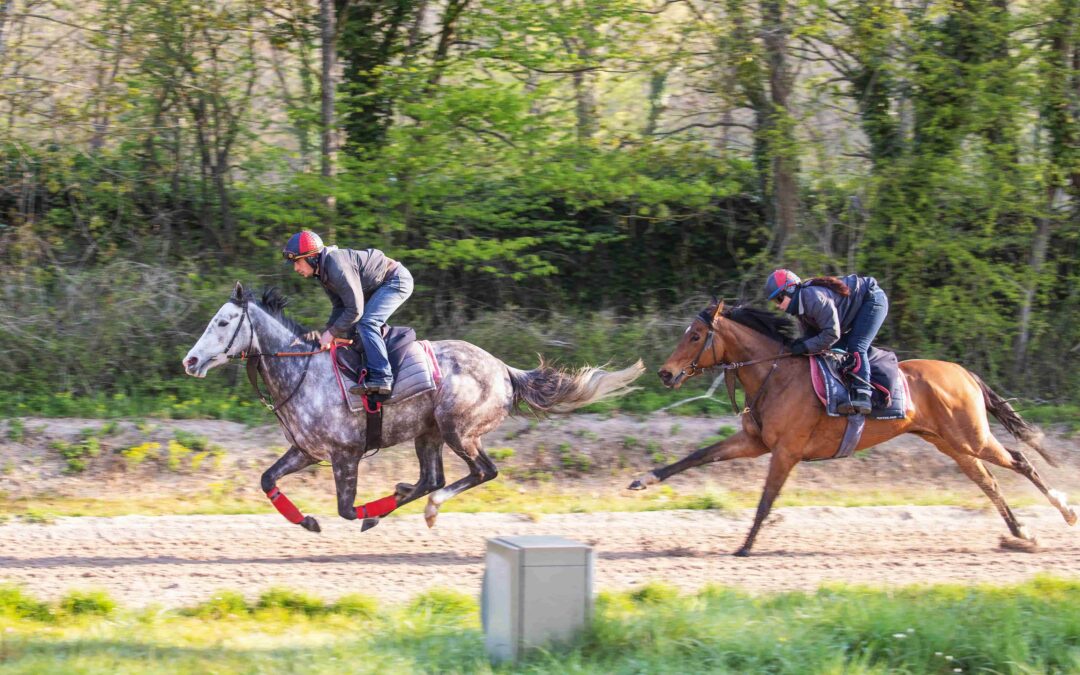Warning: number_format() expects parameter 1 to be float, string given in /var/www/wordpress/wp-includes/functions.php on line 425
Data has been increasingly essential in the world of sports in recent years. It affects every discipline, including horse racing. This data, which is a true vector for performance improvement and health monitoring, also plays a significant role. Indeed, the current adoption of technology in racehorse training allows for very large-scale studies.
A team of researchers, therefore, asked the following question: what are the effects of age and training in Thoroughbreds?
Training and age have a demonstrable influence on physiological indicators collected during training. Understanding the evolution of the measured parameters is critical in the context of early diagnosis of developmental abnormalities in Thoroughbreds. Researchers investigated the combined influence of age and training on four parameters measured during Thoroughbreds daily training. They had a system that measured gait, distance, pace, heart rate, length, and stride frequency at 1Hz (Equimetre, Arioneo, France). For sessions of at least 20 minutes, international data from 46 512 training sessions (7 622 horses and 368 trainers) were retrieved anonymously, including a 600m segment of continuous canter with an average speed greater than 36km/h.
Purpose – To compare age groups for 4 physiological parameters assessed in a standardized manner during daily Thoroughbreds training.
Age and training: the study
The following four parameters were analysed:
Maximum heart rate – The maximal number of beats a horse’s heart can reach when exercising. It has no effect on performance and is unique to each horse.
15-minute recovery – Heart rate collected 15 minutes after exercise. This characteristic indicates the horse’s fitness level.
Warm-Up Time Average Heart Rate – The heart rate recorded during the training warm-up phase.
Stride Frequency – The number of strides repeated each second. In the literature, this parameter has been proposed as a method for determining the preferred distance in horses.


Figure 1 – Effect of age (2, 3, 4, 5, 6 years) on the horse’s maximum heart rate, 15min post-exercise recovery, average warm-up heart rate, and stride rate at 14m/s. n: the number of measurements included in the population.
We can see:
- A significant decrease in maximum heart rate over the 2-6 year period.
- A significant decrease in Recovery at 15 min between the periods of 2-4 years and 5-6 years.
- Stride frequency also decreased significantly between the ages of 2 and 4 years.
Thoroughbreds significantly improve their fitness between 2 & 4 years
The Figure 1 depicts the link between age and parameters. The effect of exercise on maximal heart rate implies a considerable gain in fitness between the ages of 2 and 4 years. As previously stated, this may be explained by many physiological adaptations such as increased heart size, cardiac output, and total aerobic capability. Trainers may be particularly interested in recovery as a fitness indicator.
Acceleration capacity changes with age
In this study, it is shown that stride frequency decreases with age, indicating that speed improvement is primarily achieved by increasing stride length, as has been demonstrated in racing. Thus, there is a speed threshold that justifies that the Thoroughbreds have reached his maximum heart rate.
Conclusion
Thus, throughout 2 to 4 years, age and training have a considerable impact on 15-minute recovery, maximal heart rate, and stride frequency characteristics. A deeper study is required to investigate and discover physiological responses to training across geographic borders. The construction of an equine physiological parameter database broadens the range of possibilities in equestrian sport science and gives several solutions. The path is clear; now is the time to fill in the blanks, to learn what we don’t know.
Written by: Guillaume Dubois1, Marie Didier1, Fe ter Woort2, Emmanuelle Van Erck2
1LIM France, 94 boulevard August Blanqui, 75013 Paris, France; guillaume@arioneo.com
2Equine Sports Medicine Practice, 83 avenue Beau Sejour, 1410 Waterloo, Belgium


